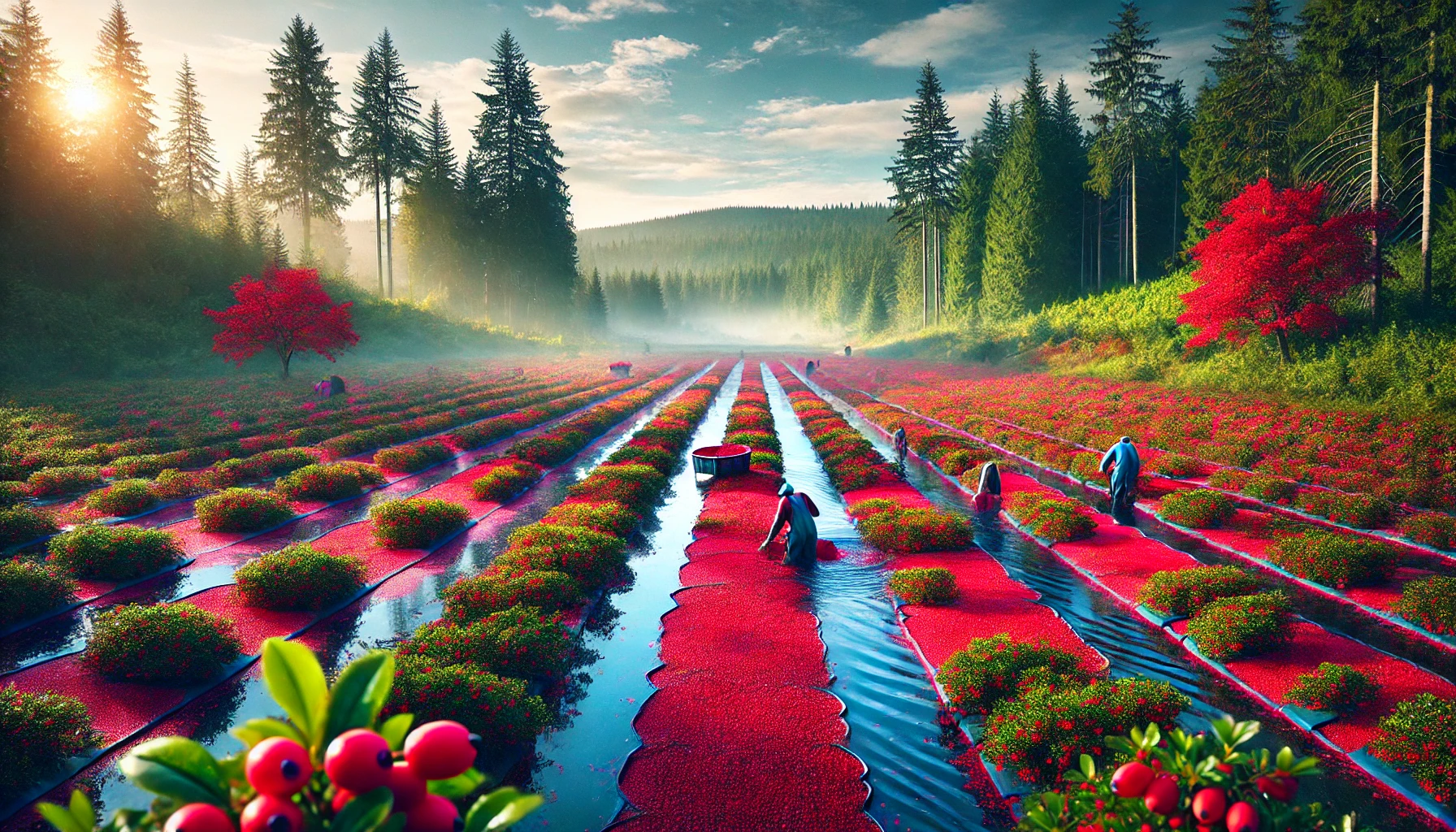Cranberries, a tart and vibrant fruit, are a significant agricultural product in Oregon. The state’s unique climate and soil conditions create an ideal environment for cultivating this berry, which holds a special place in both the local economy and culture. This blog will explore the history, cultivation, and economic impact of cranberries in Oregon, highlighting their importance and the challenges faced by growers. Additionally, we will touch on key places to visit and sights to see related to cranberries in Oregon.
A Brief History of Cranberries in Oregon
Cranberries have a long history in North America, with indigenous peoples using them for food, medicine, and dye. The cultivation of cranberries in Oregon began in the early 20th century, when growers recognized the potential of the coastal regions for cranberry farming. The state’s cranberry industry has since grown significantly, contributing to both the local economy and the agricultural diversity of the region.
Ideal Growing Conditions
Oregon’s coastal climate provides the perfect conditions for cranberry cultivation. The region offers:
- Mild Temperatures: The coastal climate, with its mild summers and cool, wet winters, is ideal for cranberries, which thrive in cooler environments.
- Sandy Soils: Cranberries require acidic, well-drained soils, which are abundant in Oregon’s coastal regions.
- Abundant Water: Cranberries need a lot of water, particularly during the growing season. Oregon’s ample rainfall and irrigation systems support this need.
Cultivation Practices
Cranberry farming is labor-intensive and requires specific practices to ensure a successful harvest. Key steps in the cultivation process include:
- Planting: Cranberry vines are planted in beds of sand, peat, gravel, and clay, which provide the right balance of drainage and moisture retention.
- Irrigation: Proper irrigation is crucial, especially during the growing season and harvest. Growers use a combination of rainwater and irrigation systems to maintain optimal moisture levels.
- Pest and Disease Management: Integrated Pest Management (IPM) practices are common, combining biological, cultural, and chemical methods to control pests and diseases while minimizing environmental impact.
- Harvesting: Cranberries are typically harvested in the fall. Two main methods are used: dry harvesting, where berries are collected using a mechanical picker, and wet harvesting, where beds are flooded and berries are corralled and collected from the water’s surface.
Economic Impact
The cranberry industry plays a vital role in Oregon’s economy. Key economic contributions include:
- Employment: Cranberry farming provides jobs in rural areas, supporting local communities.
- Export Revenue: A significant portion of Oregon’s cranberries are exported, contributing to the state’s agricultural exports.
- Local Economy: Cranberry farms support local economies through the purchase of supplies and services, and by attracting tourists, particularly during the harvest season.
Challenges Faced by Growers
Cranberry farmers in Oregon face several challenges that can impact their yield and profitability:
- Pests and Diseases: Managing pests and diseases is an ongoing challenge that requires constant vigilance and adaptation of management practices.
- Market Fluctuations: Prices for cranberries can be volatile, influenced by factors such as supply and demand, trade policies, and competition from other growing regions.
Sustainable Practices
Oregon cranberry growers are increasingly adopting sustainable practices to address environmental concerns and ensure the long-term viability of their farms. These practices include:
- Water Conservation: Efficient irrigation techniques and water recycling help conserve water resources.
- Organic Farming: Some growers are transitioning to organic farming methods, reducing the use of synthetic chemicals and enhancing soil health.
- Habitat Conservation: Maintaining natural habitats around cranberry bogs supports biodiversity and helps control pests naturally.
Sights to See and Key Places to Visit
Oregon’s cranberry industry offers several interesting sights and places to visit, providing a unique insight into this important agricultural sector:
- Cranberry Festivals: Several towns in Oregon host cranberry festivals, such as the Bandon Cranberry Festival, which features parades, tastings, and tours of cranberry bogs.
- Cranberry Bogs: Visiting a cranberry bog during the harvest season is a unique experience. Many farms offer tours where visitors can learn about cranberry farming and watch the harvesting process.
- Cranberry Sweets & More: Located in Bandon, this shop offers a variety of cranberry products, from candies to jams, and provides an opportunity to taste locally produced cranberry treats.
- Cranberry Museum: The Cranberry Museum in Long Beach, Washington, just north of the Oregon border, offers exhibits on the history and cultivation of cranberries, as well as a chance to walk through working cranberry bogs.
The Future of Cranberries in Oregon
The future of cranberry farming in Oregon looks promising, with ongoing research and innovation aimed at improving yields, sustainability, and marketability. Key areas of focus include:
- Breeding and Genetics: Developing new cranberry varieties that are more resistant to pests and diseases and better suited to local growing conditions.
- Technology: Using advanced technologies such as precision agriculture to optimize growing conditions and improve efficiency.
- Marketing: Promoting the unique qualities of Oregon cranberries, including their high quality and sustainable farming practices, to attract consumers and expand markets.
Cranberries are a vital part of Oregon’s agricultural landscape, providing economic benefits and supporting local communities. Despite the challenges, Oregon’s cranberry growers are committed to sustainable practices and innovation, ensuring the continued success of this vibrant industry. By understanding the history, cultivation practices, and economic impact of cranberries in Oregon, we can appreciate the hard work and dedication that goes into bringing this delicious and nutritious fruit to our tables.
Visiting cranberry-related sites and participating in local festivals can offer a deeper connection to this important agricultural tradition, making cranberries not just a crop, but a cultural experience in Oregon.



